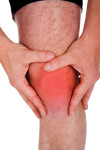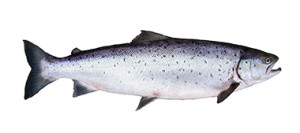Joint Pain, Sleep, Laughter & Love, Mice, Fish
Posted on October 4, 2015 by bob in NewsUCanUse
Glucosamine for Joint Pain? No. And yes.
The best-designed studies on glucosamine as an effective pain reliever for knee pain caused by osteoarthritis found that, overall, glucosamine alone or in combination with chondroitin works no better than a placebo. It’s noteworthy that many studies showing a benefit from glucosamine were sponsored by companies that market the supplement. However, new evidence suggests glucosamine/chondroitin may offer an alternative treatment for some patients, in particular those who can’t take non-steroidal anti-inflammatory drugs (NSAID), such as celecoxib (Celebrex®).
In a large, government-sponsored trial of 1,600 people with knee osteoarthritis, 79% of a sub-group of subjects with moderate-to-severe pain reported significant pain reduction versus a smaller percentage of those who got a placebo.
Take away: Glucosamine plus chondroitin may be an option for osteoarthritis patients with heart disease and other cardiovascular conditions that prevent them from taking NSAIDs. Research suggests further study to determine additional risks and benefits. — Scientific American Health After 50, HealthAfter50Alerts@sp.healthafter50.com
Back to school, back to sleep
Getting a good night’s sleep might buffer the impact of stress on kids’ cortisol level, a hormone produced in the adrenal gland to regulate the body’s cardiovascular, metabolic and immune systems. While short-term exposure to cortisol prepares the body for the “fight or flight” response, long-term exposure to cortisol can put people at risk for health problems like heart diseases, weight gain and depression.
Better sleep, combined with other healthy lifestyle behaviors, can reduce the negative consequences of stress on kids’ cortisol levels. They should sleep 8 to 9 hours each night, have routine sleeping hours, avoid naps in the day, and avoid electronic devices before bedtime. Psychoneuroendocrinology — ScienceDaily, www.sciencedaily.com/releases/2015
Laughter and love
Research has found when two strangers meet, the more times a man tries to be funny, and the more a woman laughs at those attempts, the more likely the woman is interested in the man. When both laugh together, it’s an even better indication of a romantic connection. The findings were among the discoveries made as part of a study looking for a connection between humor and intelligence.
For the past decade, research has debated whether women appreciate men’s humor, which is often cited as one of the most valued traits in a partner, because it allows them to uncover the smarts of potential mates. Published on-line in the journal Evolutionary Psychology, the study found no link between humor and intelligence, but offered explanations regarding why humor is so important in finding partners:
— humor points to having a sociable and agreeable personality;
— men use humor to gauge if a woman is interested in them;
— humor can be a pathway to a more long-lasting relationship.
ScienceDaily, www.sciencedaily.com/releases/2015
Of mice and men (and asthma)
Researchers have successfully established a causal relationship between exposure to so-called “farm dust” and protection against asthma and allergies. This breakthrough discovery, published in the journal Science, is a major step towards the development of an asthma vaccine.
In addition to the causal relationship, the scientists discovered the mechanism behind this: farm dust makes the mucous membrane inside the respiratory tracts react less severely to allergens such as the house dust mite. The findings were the result of studies with mice. When tested in patients, it showed people suffering from allergies and asthma have a deficiency in a protective protein, a protein that helps reduce allergic and asthmatic reactions.
The research was conducted at the Flanders Institute for Biotechnology Inflammation Research Center, and the University of Gent, in partnership with researchers from Munich, Rotterdam and Marseille. — ScienceDaily, www.sciencedaily.com/releases/
Eating fish and cognitive decline
Omega-3s are present in a variety of foods including flaxseed, canola oil, walnuts, and leafy green vegetables. The best dietary source of omega-3s is seafood, especially fatty fish. The benefits of seafood consumption on cognition have been reported in several large-scale dietary studies, including a 2004 study that found people who consumed fish once or more per week had a 60 percent lower risk of developing Alzheimer’s than those who didn’t eat as much. Moreover, protective benefits could be obtained from consuming fish in a variety of forms, including: tuna salad or tuna sandwiches, fish sticks, fish cakes or fish sandwiches, fresh fish, crab and lobster.
A more recent study compared people who consumed one to two fish meals per week versus those with less than weekly fish consumption. The finding showed that, overall, fish eaters had less cognitive decline than non-fish eaters, equivalent to being three to four years younger in age.
(NOTE: Nearly all fish and shellfish contain traces of mercury, exposure to which can cause serious neurological damage. However, the FDA and the EPA say the risk of mercury poisoning from eating fish and shellfish is negligible for most people, the exceptions being young children and women who are pregnant, trying to become pregnant or are nursing. There are low-mercury seafood options, including cod, whitefish, mahi-mahi, ocean perch, flounder, salmon, clams, oysters, mussels, shrimp and lobster.) — Scientific American Health After 50, HealthAfter50Alerts@sp.healthafter50.com









